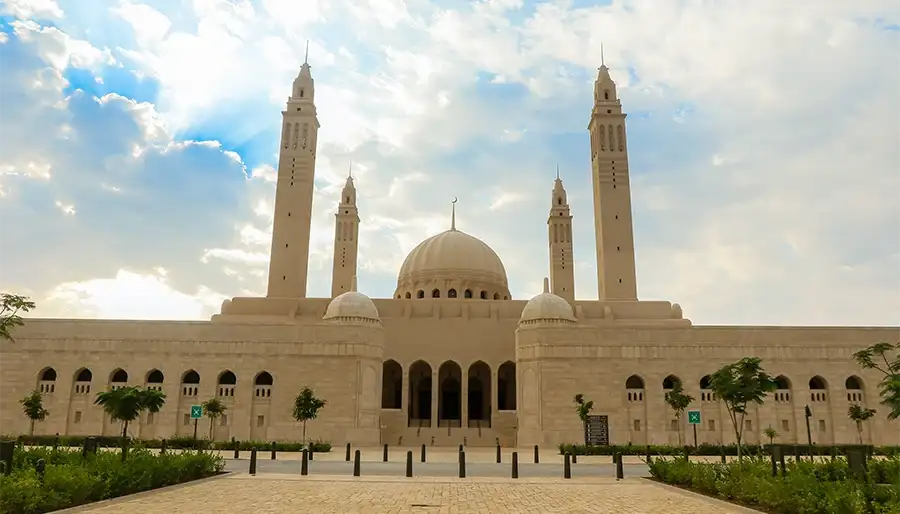
Are you dreaming of exploring the stunning landscapes and rich culture of Oman? To make the most of your trip, it's important to know the best time to visit Oman. The country's weather and temperature can vary greatly depending on the season and region. In this article, we'll guide you through Oman's climate and help you choose the ideal time for your adventure.
Key Highlights
- Oman has two main seasons: a hot summer from May to September and a cooler winter from October to April
- The best time to go to Oman is from November to March when temperatures are pleasant and rainfall is minimal
- Muscat, the capital city, experiences high temperatures year-round, but the best time to visit Muscat is during winter months
- Oman's southern region, Dhofar, has a unique monsoon season from June to September
- Consider factors like festivals, events, and hotel prices when planning your trip
Also Read -
Add these must-visit historical sites to your travel list
Understanding Oman's Climate
Oman is located in the Middle East, bordering the Arabian Sea, Gulf of Oman, and the Persian Gulf. The country has an arid climate with hot, dry conditions for most of the year. However, temperatures and rainfall can vary depending on the region and season.
Oman has two main seasons:
-
Summer (May to September): Hot and humid with temperatures often exceeding 40°C (104°F)
-
Winter (October to April): Cooler and more pleasant with temperatures ranging from 25°C to 35°C (77°F to 95°F)
Best Time to Visit Oman
The best month to visit Oman is generally considered to be from November to March. During these months, temperatures are more comfortable, ranging from the mid-20s to low 30s Celsius (mid-70s to mid-80s Fahrenheit). This makes it ideal for outdoor activities and sightseeing.
Keep in mind that December and January can see some rainfall, especially in the northern regions. However, showers are usually brief and won't significantly impact your travel plans.
Regional Variations
Check out how the temperature varies across regions and the attractions in each region for you to explore -
Muscat and the North
Muscat, Oman's capital city, experiences high temperatures year-round due to its location on the coast. The best time to visit Muscat is during the winter months when temperatures are more bearable, ranging from 25°C to 30°C (77°F to 86°F).
If you plan to visit the northern regions like Musandam or the Hajar Mountains, winter is also the most pleasant time. You can enjoy activities like hiking, dolphin watching, and exploring the stunning fjords.
Dhofar and the South
Oman's southern region, Dhofar, has a unique climate compared to the rest of the country. From June to September, Dhofar experiences the Khareef, or monsoon season. During this time, the region transforms into a lush, green landscape with waterfalls and flowing rivers.
Many locals and tourists flock to Dhofar during the Khareef to escape the heat and enjoy the cooler, misty weather. If you don't mind some rain and crowds, this can be an enchanting time to visit Salalah and the surrounding areas.
Also Read -
Are you a beginner backpacker? Here's a must-read guide for you
Other Factors to Consider
When planning your trip to Oman, it's not just about the weather. Here are some other factors to keep in mind:
-
Festivals and Events: Oman hosts several cultural festivals throughout the year, such as the Muscat Festival in January/February and the Salalah Tourism Festival during the Khareef. These events can add an extra dimension to your trip but may also mean higher prices and crowds.
-
Ramadan: The Islamic holy month of Ramadan can fall anywhere from April to June, depending on the lunar calendar. During this time, many businesses operate on reduced hours, and restaurants may be closed during the day. However, experiencing the nightly festivities and Iftar meals can be a unique cultural experience.
-
Hotel Prices: Peak tourist season in Oman aligns with the cooler winter months, so hotel prices may be higher from November to March. If you're on a budget, consider travelling during the shoulder months of April, May, September, or October.
Tips for Visiting Oman
No matter when you choose to visit Oman, here are some tips to make your trip more enjoyable:
- Dress modestly, especially when visiting cultural sites or rural areas
- Stay hydrated and protect yourself from the sun, even during winter
- Try local Omani dishes like Shuwa (slow-cooked meat) and Halwa (sweet dessert)
- Respect local customs and traditions, particularly during Ramadan
- Consider purchasing
travel insurance to cover unexpected events or emergencies
Speaking of travel insurance, Reliance General Insurance offers comprehensive plans for your Oman trip. Their international travel insurance covers medical emergencies, trip cancellations, lost baggage, and more. It's a smart way to protect yourself and your loved ones while exploring this beautiful country.
Plan Your Perfect Oman Getaway
Now that you know the best time to visit Oman, you can start planning your dream trip. Whether you want to explore the grand mosques of Muscat, hike in the Hajar Mountains, or relax on the beaches of Salalah, Oman has something for everyone.
Remember to consider factors like weather, events, and prices when choosing your travel dates. And don't forget to protect yourself with a reliable travel insurance plan from Reliance General Insurance.
With its stunning landscapes, rich culture, and welcoming people, Oman is a destination that will leave you with unforgettable memories. So pack your bags, book your tickets, and get ready for the adventure of a lifetime!